Wood Deck vs. Composite Deck
Demand help choosing deck boards? We've got y'all covered.
Whether you're building a new deck or replacing old, worn boards, you'll find an overwhelming number of decking options. The two main categories, woods and composite, include dozens of choices. I'll walk you through the most popular ones to assist you lot choose the right material for your deck.
Wood
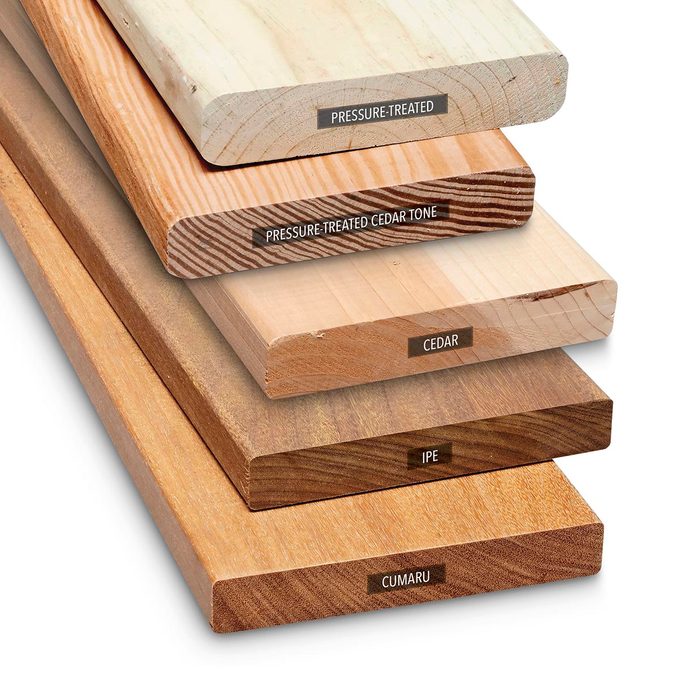
Woods decking is beautiful and typically much more economical than blended. Notwithstanding, subsequently a few years it loses its warm tone and turns a dull gray if it's not meticulously maintained. That increases its lifetime cost.
Pressure Treated
- The boards are soaked with chemicals and put under pressure so the treatment permeates the entire lath. That makes them resistant to rot and insects.
- Copper, a common element in treatments, gives treated boards their light-green tint.
- When you're sanding or cutting whatever treated lumber, respirators are a must.
- This lumber is readily available in many crimson and brownish tones.
- Cut ends of pressure-treated boards must be treated with an exterior sealer, such as Woodlife CopperCoat.
- Boards must be thoroughly dry before you utilise a stain or protective finish.
Cedar
- Naturally rot- and insect-resistant.
- It has a beautiful bright tone and tin can be stained easily.
- Long lasting and easy to work with.
Exotics: Ipe, Cumaru
- Naturally rot- and insect-resistant, exotic forest have a cute, high-end look.
- The installation is labor intensive. The boards are heavy and dense, and need to exist predrilled for screws.
- The boards are available with or without grooved edges to accommodate hidden fasteners.
PVC
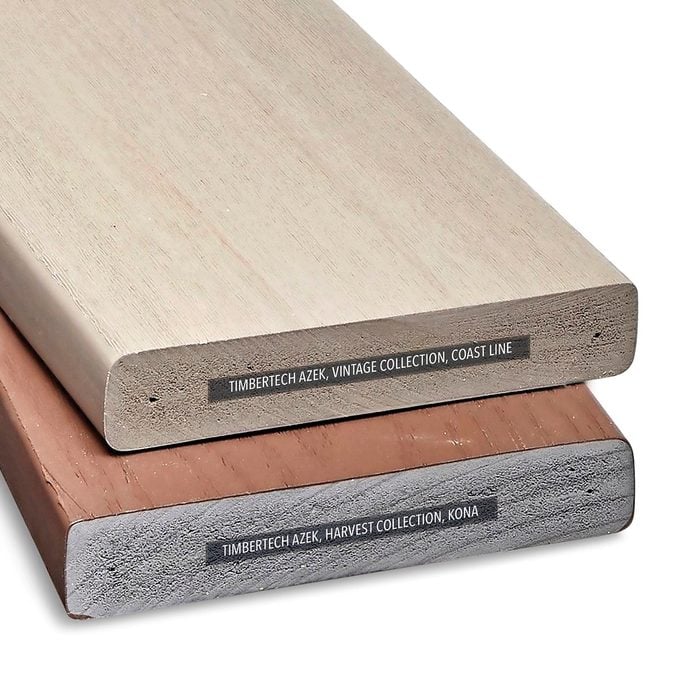
Cellular PVC is an all-plastic decking. Its core is a porous (cellular) lightweight plastic that'south capped simply similar other blended decking. PVC contains no organic material to rot, grow mold or cracking when exposed to moisture, and it comes with a 20-plus-year warranty from staining and fading.
- Can be bent using heat for stunning curved designs. PVC expands and contracts more than than wood and WPC as the temperature shifts.
- It may become stained with exposure to some rubber products similar grill mats and water shoes.
- PVC is the virtually expensive option, ranging from $iv.40 to $7.50 per linear foot.

Wood Plastic Composite

Made with up to 95 percent recycled plastic that encapsulates the wood fibers, wood plastic composite (WPC) decking is stiff and often comes with a 20-yr or longer warranty against staining and fading. Unlike natural wood, it won't crack or splinter. Bated from an easy almanac soap-and-water cleaning, information technology'due south pretty much maintenance-free decking.
- Much heavier than wood.
- Some WPC decking requires shorter joist and stringer spans because it's less rigid than solid wood.
- Ranging from $2.90 to $6 per lin. ft., WPC is more expensive than wood.
Mineral-Based Composite
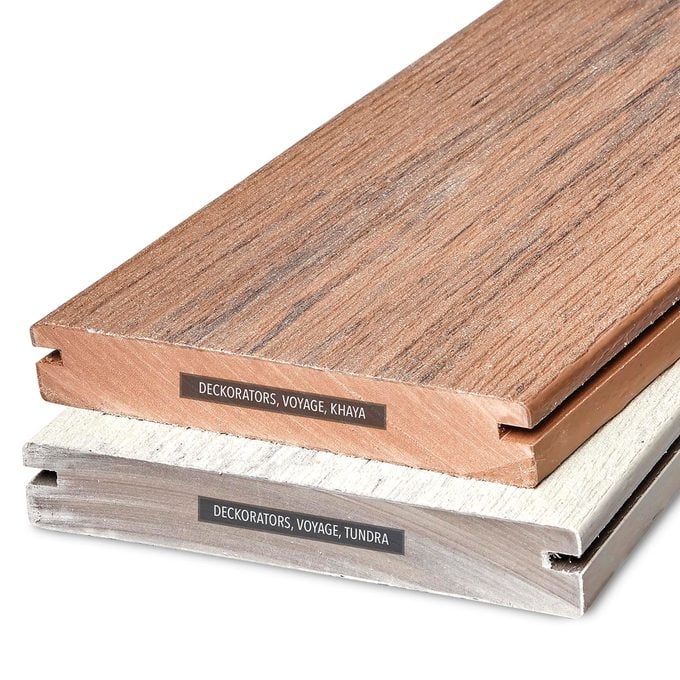
Mineral-based composite (MBC) is the newest type of blended decking. It's as lightweight as PVC but twice equally stiff, and carries a 25-year stain and fade warranty. At that place's well-nigh no temperature-induced shrinking or swelling. MBC decking is highly resistant to moisture.
- MBC is more rigid than WPC and PVC, and then it can be used on longer joist and stringer spans.
- It tin withstand ground and water contact.
- Information technology tin can maintain smaller gaps at miters and seams. Ranging from $4 to $half dozen per lin. ft., MBC is comparable in price to WPC.
Capped Vs. Uncapped

Well-nigh modern decking has a hard plastic cap for better protection against harmful UV rays, weathering, scratches and dents. Capped deck boards provide color variations and the appearance of textured wood grain. But uncapped decking has improved and nonetheless has a place.
Uncapped boards are cheaper and bachelor with forest grain patterns. Because uncapped deck boards are uniform throughout, y'all can round over cut ends or edges with a router without noticeably changing the board'southward sheen or colour. Scratches or dents can be "healed" with a heat gun or left to heal naturally over time nether the sun's heat.
How Much Does It Toll to Build a Deck?
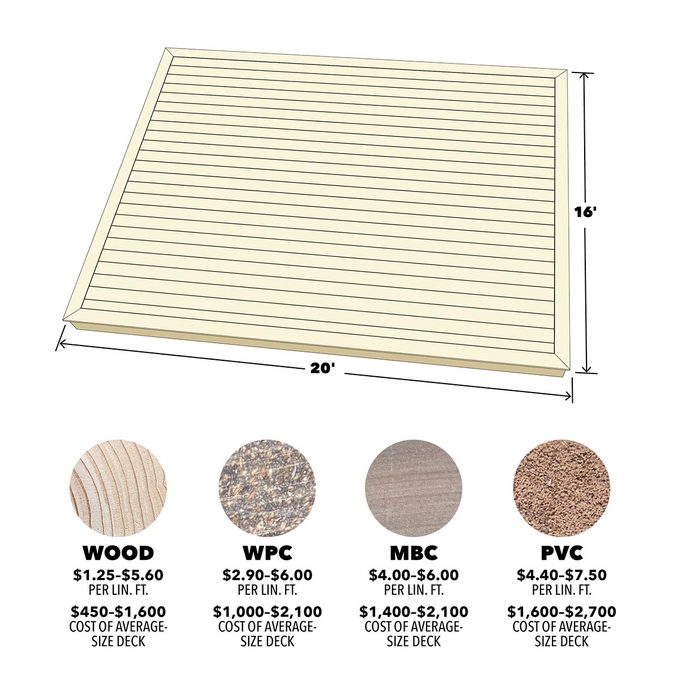
You can observe economical, midrange and high-cease choices for each type of decking. A typical deck (sixteen x xx ft.) covers well-nigh 350 sq. ft. For that size, the cost of decking solitary can range from $450 to $2,700.
Blueprint Options
Today, it'south easy to become the look you lot're after. The color, grain pattern, size and shape of the boards give you countless design options.
Grain Pattern
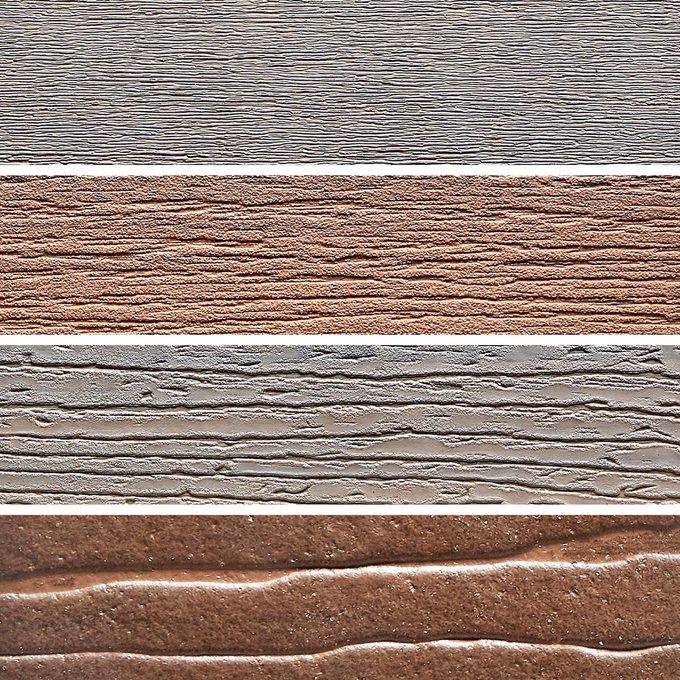
Every lath of natural wood has a unique grain blueprint. Even though the "grain" in composite decking mimics existent forest, the pattern repeats from board to board. The grain options vary, from a deep embossed texture to tight, directly grain.
Get A Grip
Although all decking meets a minimum requirement for grip, if you lot're concerned nigh slippery conditions, consider decking with deeper grain.
Color
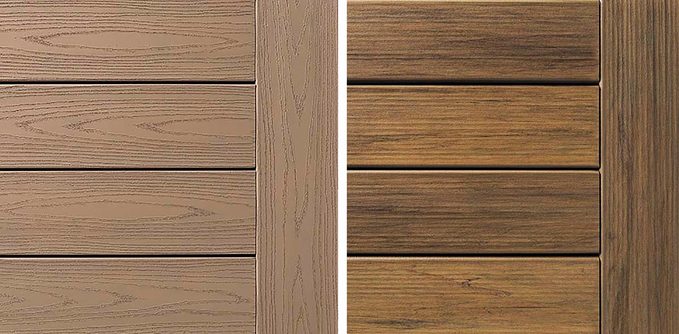
Most whatever tone of wood or stained wood is available in composite decking. In addition, some of the more expensive composites have realistic color streaking that mimics the natural colors of real wood. Typically, yous won't see this in the more than economical options, but you lot'll however observe a wide range of colors.
Temperature
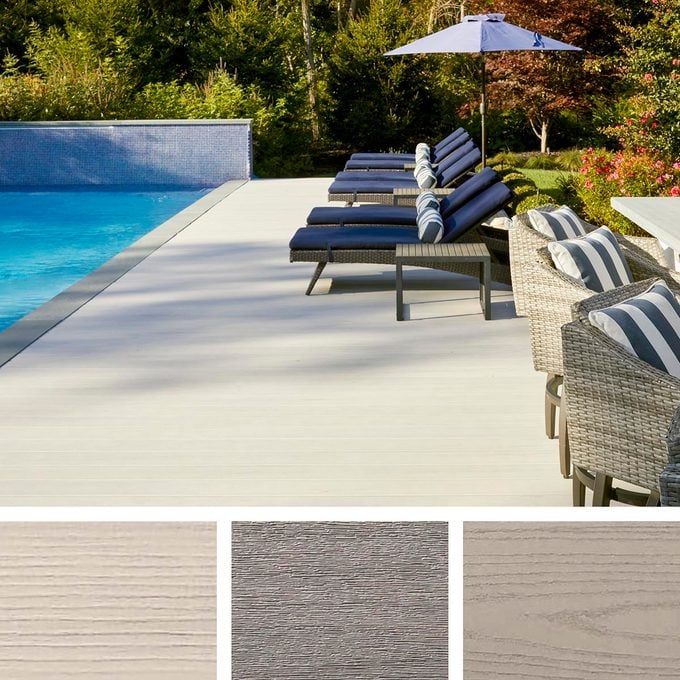
Composite decking gets hot in the sun. And then if your deck gets total sun, consider lighter-colored deck boards or be prepared to vesture shoes. Some manufacturers claim their decking has special properties that resist heat retentivity, remaining cooler even in darker colors.
Deck Profiles
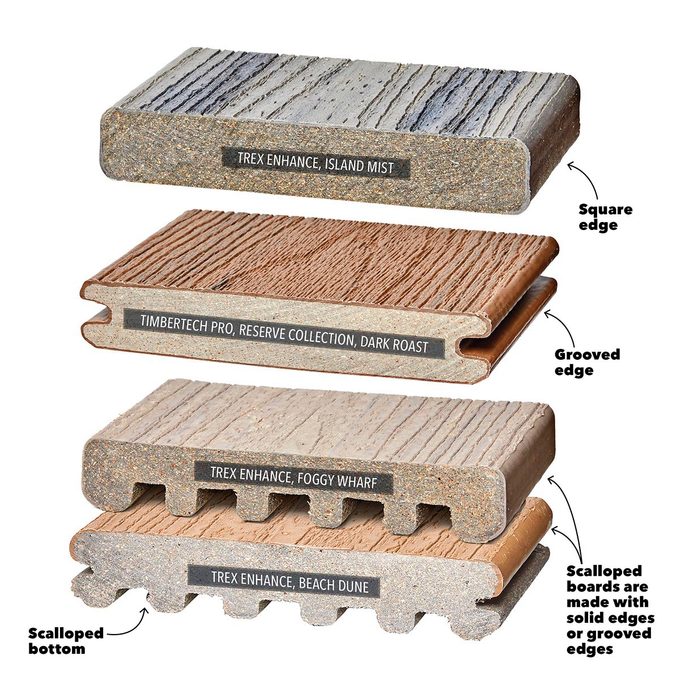
The contour and cross section of your deck boards may seem insignificant, but they're of import to how your deck is built and how it will look.
Square Border
Use square profile boards on your deck's borders to hibernate cut ends or as a pattern lath to avert seams. With square contour boards, you lot'll typically bulldoze fasteners through the face of the boards. However, some fastening systems let you hibernate the fasteners past using a jig to drive them into the board's edge at an angle. CAMO has a system like this.
Grooved Edge
Use grooved-edge boards in the eye of the deck, anywhere the border isn't visible. Subconscious deck fasteners fit in the grooves for a clean wait.
Scalloped Lesser
The scalloped undersides make the board lighter weight and a footling less expensive. Face-screwing scalloped boards tin can exist difficult. Screws angle toward the grooves, pull the board and get out an oblong hole that's hard to plug.
Non-Standard Board Widths
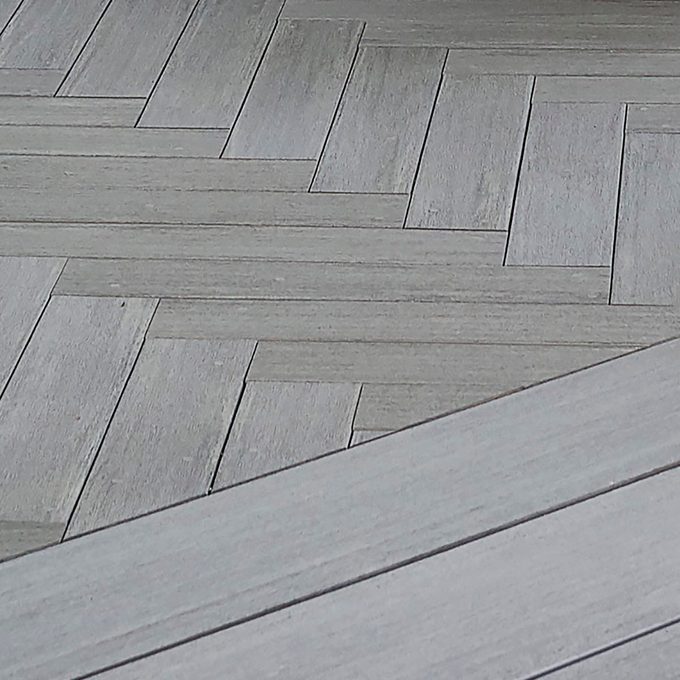
Standard deck boards are 5-i/4-in. broad, but many companies offer dissimilar widths, from three inches upwards to almost 12 inches wide. This lets you achieve a different look from standard decking and opens the door to many pattern possibilities. Broad boards also make single-board stair treads possible.
Follow Fastener Recommendations

Whichever decking you lot choose, exist sure to follow the manufacturer'south fastening instructions. The warranty typically depends on your use of the recommended fasteners, including face screws, fascia screws and hidden fasteners.
Matching Skirt Boards
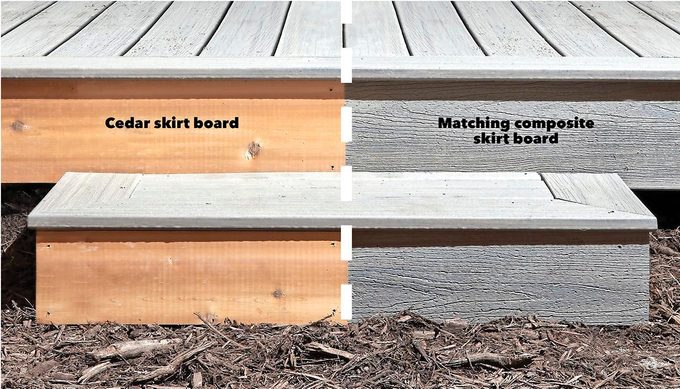
About decking manufacturers offer a 1/2-in.-thick version of decking for use as skirt boards (11 inches wide) and stair risers (eight inches wide). These are typically available in a manufacturer'south color options.
Source: https://www.familyhandyman.com/article/wood-or-composite-deck/
0 Response to "Wood Deck vs. Composite Deck"
Post a Comment